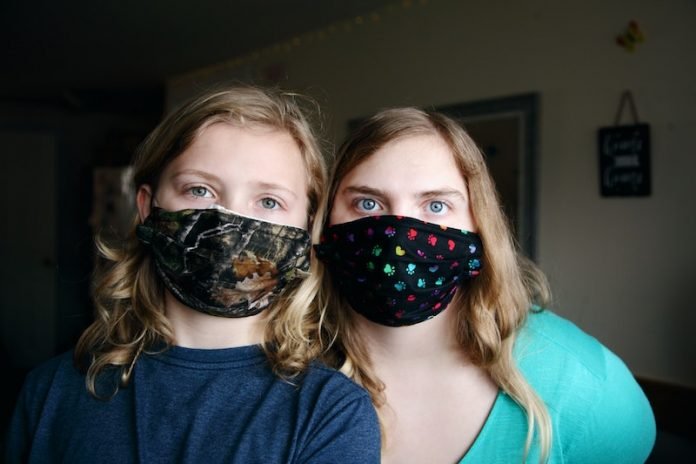
Studies show that homemade masks help combat the spread of viruses like COVID-19 when combined with frequent hand-washing and physical distancing.
Many of these studies focus on the transfer of tiny aerosol particles; however, researchers say that speaking, coughing, and sneezing generates larger droplets that carry virus particles.
Because of this, scientists say the established knowledge may not be enough to determine the effectiveness of some fabrics used in homemade masks.
In a new study, researchers examined the effectiveness of common household fabrics in blocking droplets.
They found that most homemade masks are doing a great job in preventing COVID-19 transmission, even when people sneeze.
The research was conducted by a team at the University of Illinois, Urbana-Champaign.
Aerosol particles are typically classified as less than 5 micrometers and lie in the range of hundreds of nanometers.
However, larger droplets—up to about 1 millimeter in diameter—can also be expelled when an individual speaks, coughs or sneezes.
These larger droplets pose a problem because, with sufficient momentum, they can squeeze through the pores of some fabrics, break into smaller droplets, and become airborne.
However, for an individual to feel compelled to wear a mask, it must be comfortable and breathable, the researchers said.
A mask made out of a low-breathability fabric is not only uncomfortable but can also result in leakage as the exhaled air is forced out around contours of a face, defeating the purpose of the mask and providing a false sense of protection.
In the study, the team showed that many common fabrics exploit the trade-off between breathability and efficiency of blocking droplets—large and small.
They tested the breathability and droplet-blocking ability of 11 common household fabrics, using a medical mask as a benchmark.
The fabrics selected ranged from new and used garments, quilted cloths, bedsheets, and dishcloth material.
The researchers then characterized the fabrics in terms of their construction, fiber content, weight, thread count, porosity, and water-absorption rate.
In the lab, the researchers fill the nozzle of an inhaler with distilled water seeded with easy-to-find 100-nanometer diameter fluorescent particles—which happens to be the size of a novel coronavirus particle.
When puffed, the inhaler forces the water through the nozzle and generates high-momentum droplets that collect on a plastic dish placed in front of the inhaler.
To test the fabrics, the researchers repeat this process with the various materials placed over the collection dishes.
Their analyses revealed that droplets leave the inhaler at about 17 meters per second. Droplets released by speaking, coughing, and sneezing has velocities within the range of 10 to 40 meters per second.
In terms of size, the high-speed video detected droplets with diameters in the 0.1 to 1-millimeter range, matching that of the larger-sized droplets released by speaking, coughing and sneezing.
The findings show that all of the fabrics tested are considerably effective at blocking the 100-nanometer particles carried by high-velocity droplets similar to those that may be released by speaking, coughing and sneezing, even as a single layer.
With two or three layers, even the more permeable fabrics, such as T-shirt cloth, achieve droplet-blocking efficiency that is similar to that of a medical mask, while still maintaining comparable or better breathability.
One author of the study is mechanical engineer Taher Saif.
The study is published in Extreme Mechanics Letters.
Copyright © 2020 Knowridge Science Report. All rights reserved.



